36
Manifeste du futurisme
Author: Filippo Tommaso Marinetti
Year: 1909 Edit Add
Book: Postmodernism, or, The Cultural Logic of Late Capitalism
Manifeste du futurisme
Author: Filippo Tommaso MarinettiYear: 1909 Edit Add
Book: Postmodernism, or, The Cultural Logic of Late Capitalism
It is appropriate to recall the excitement of machinery in the moment of capital preceding our
own, the exhilaration of futurism, most notably, and of Marinetti's celebration of the machine
gun and the motorcar. These are still visible emblems, sculptural nodes of energy which give
tangibility and figuration to the motive energies of that earlier moment of modernization.
It is appropriate to recall the excitement of machinery in the moment of capital preceding our
own, the exhilaration of futurism, most notably, and of Marinetti's celebration of the machine
gun and the motorcar. These are still visible emblems, sculptural nodes of energy which give
tangibility and figuration to the motive energies of that earlier moment of modernization.
Original Url: https://allsourcesarebroken.net/sites/default/files/Figaro_-_journal_non_politique.pdf Edit
Ville Radieuse
Author: Le Corbusier
Year: 1930 Edit Add
Book: Postmodernism, or, The Cultural Logic of Late Capitalism
Ville Radieuse
Author: Le CorbusierYear: 1930 Edit Add
Book: Postmodernism, or, The Cultural Logic of Late Capitalism
The prestige of these great streamlined shapes can be measured by their metaphorical presence in Le Corbusier's buildings, vast Utopian structures which ride like so many gigantic steamship liners upon the urban scenery of an older fallen earth.
The prestige of these great streamlined shapes can be measured by their metaphorical presence in Le Corbusier's buildings, vast Utopian structures which ride like so many gigantic steamship liners upon the urban scenery of an older fallen earth.
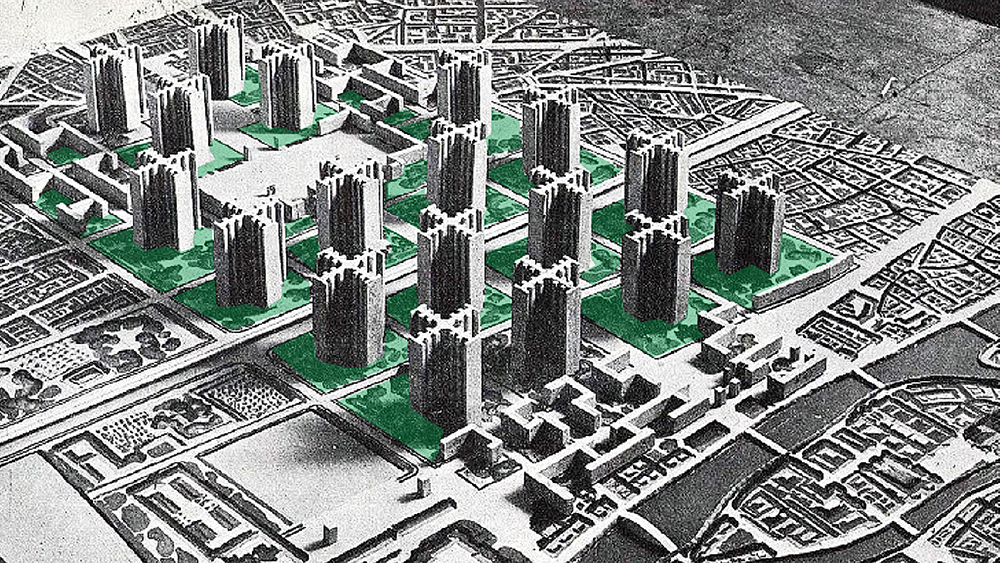 Source type: picture
Source type: pictureInfo: Ville radieuse - an unrealised project designed by Le Corbusier in 1930
Original size: 1000x563 px. Edit
Marie
Author: Francis Picabia
Year: 1917 Edit Add
Book: Postmodernism, or, The Cultural Logic of Late Capitalism
Marie
Author: Francis PicabiaYear: 1917 Edit Add
Book: Postmodernism, or, The Cultural Logic of Late Capitalism
Rotary Glass Plates
Author: Marcel Duchamp
Year: 1920 Edit Add
Book: Postmodernism, or, The Cultural Logic of Late Capitalism
Rotary Glass Plates
Author: Marcel DuchampYear: 1920 Edit Add
Book: Postmodernism, or, The Cultural Logic of Late Capitalism
Machinery exerts another kind of fascination in the works of artists like Picabia and Duchamp
Machinery exerts another kind of fascination in the works of artists like Picabia and Duchamp
 Source type: picture
Source type: pictureInfo: Rotary Glass Plates - Marcel Duchamp - 1920
Original size: 450x633 px. Edit
Le Transport des Forces
Author: Fernand Léger
Year: 1937 Edit Add
Book: Postmodernism, or, The Cultural Logic of Late Capitalism
Le Transport des Forces
Author: Fernand LégerYear: 1937 Edit Add
Book: Postmodernism, or, The Cultural Logic of Late Capitalism
...but let me mention, for completeness' sake, the ways in which revolutionary or communist artists of the 1930s also sought to reappropriate this excitement of machine energy for a Promethean reconstruction of human society as a whole, as in Fernand Léger and Diego Rivera.
...but let me mention, for completeness' sake, the ways in which revolutionary or communist artists of the 1930s also sought to reappropriate this excitement of machine energy for a Promethean reconstruction of human society as a whole, as in Fernand Léger and Diego Rivera.
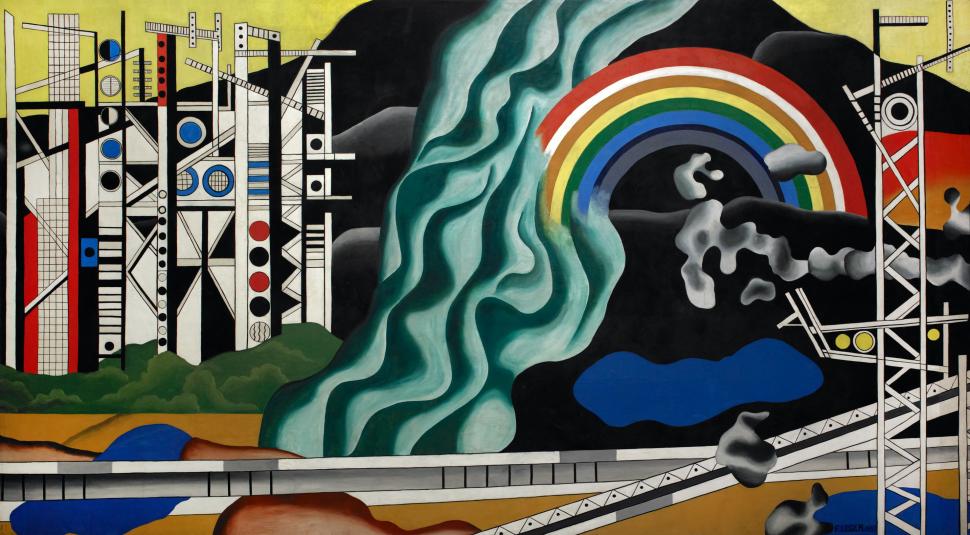 Source type: picture
Source type: pictureInfo: Le Transport des Forces - Fernand Henri Léger
Original size: 970x535 px. Edit
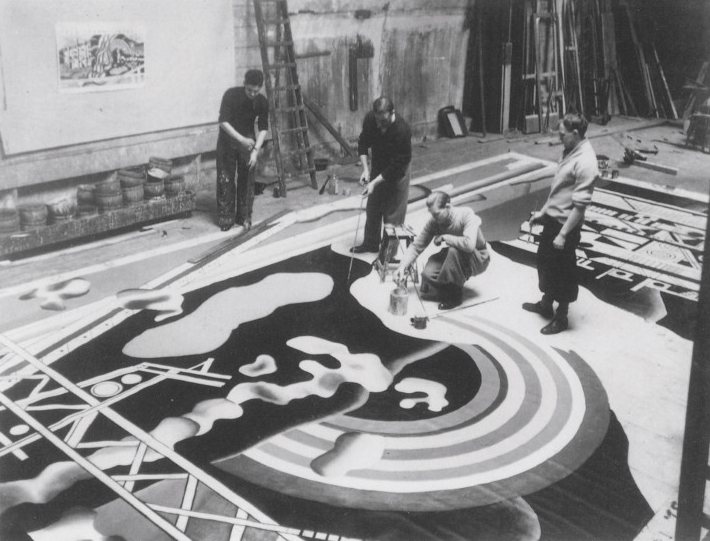 Source type: picture
Source type: pictureInfo: Fernand Léger and his students during the execution of Le Transport des Forces for the Palais de la découverte
Original size: 710x541 px. Edit
Detroit Industry Murals
Author: Diego Rivera
Year: 1932 Edit Add
Book: Postmodernism, or, The Cultural Logic of Late Capitalism
Detroit Industry Murals
Author: Diego RiveraYear: 1932 Edit Add
Book: Postmodernism, or, The Cultural Logic of Late Capitalism
...but let me mention, for completeness' sake, the ways in which revolutionary or communist artists of the 1930s also sought to reappropriate this excitement of machine energy for a Promethean reconstruction of human society as a whole, as in Fernand Léger and Diego Rivera.
...but let me mention, for completeness' sake, the ways in which revolutionary or communist artists of the 1930s also sought to reappropriate this excitement of machine energy for a Promethean reconstruction of human society as a whole, as in Fernand Léger and Diego Rivera.
 Source type: picture
Source type: pictureInfo: The Detroit Industry Murals - Sketch for a series of frescoes by the Mexican artist Diego Rivera, consisting of twenty-seven panels depicting industry at the Ford Motor Company.
Original size: 900x396 px. Edit
Classic Landscape
Author: Charles Sheeler
Year: 1931 Edit Add
Book: Postmodernism, or, The Cultural Logic of Late Capitalism
Classic Landscape
Author: Charles SheelerYear: 1931 Edit Add
Book: Postmodernism, or, The Cultural Logic of Late Capitalism
It is immediately obvious that the technology of our own moment no longer possesses this same capacity for representation: not the turbine, nor even Sheeler's grain elevators or smokestacks, not the baroque elaboration of pipes and conveyor belts, nor even the streamlined profile of
the railroad train -- all vehicles of speed still concentrated at rest -- but rather the computer, whose outer shell has no emblematic or visual power, or even the casings of the various media themselves, as with that home appliance called television which articulates nothing but rather implodes, carrying its flattened image surface within itself.
It is immediately obvious that the technology of our own moment no longer possesses this same capacity for representation: not the turbine, nor even Sheeler's grain elevators or smokestacks, not the baroque elaboration of pipes and conveyor belts, nor even the streamlined profile of
the railroad train -- all vehicles of speed still concentrated at rest -- but rather the computer, whose outer shell has no emblematic or visual power, or even the casings of the various media themselves, as with that home appliance called television which articulates nothing but rather implodes, carrying its flattened image surface within itself.
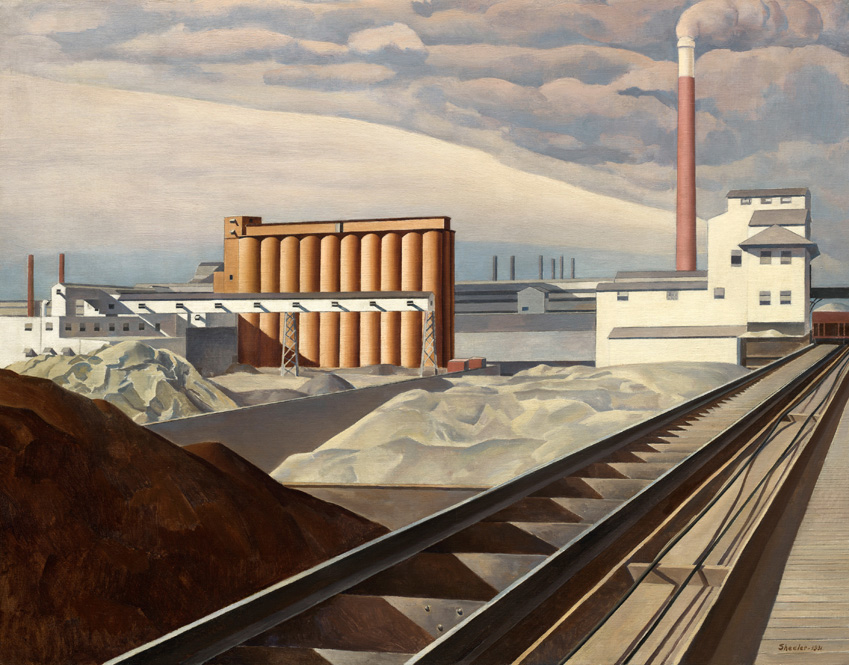 Source type: picture
Source type: pictureInfo: Classic Landscape - Charles Sheeler / Oil on Canvas / 1931
Original size: 849x665 px. Edit
 Log-in
Log-in



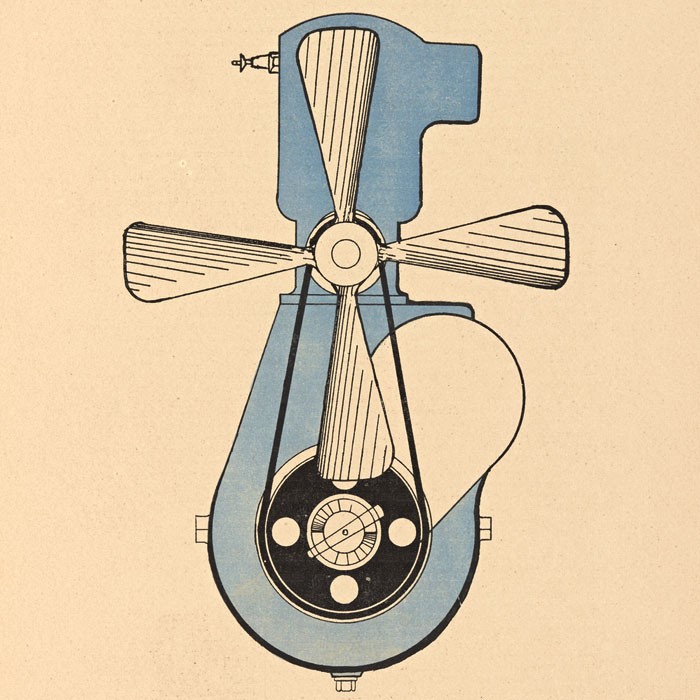 Source type: picture
Source type: picture